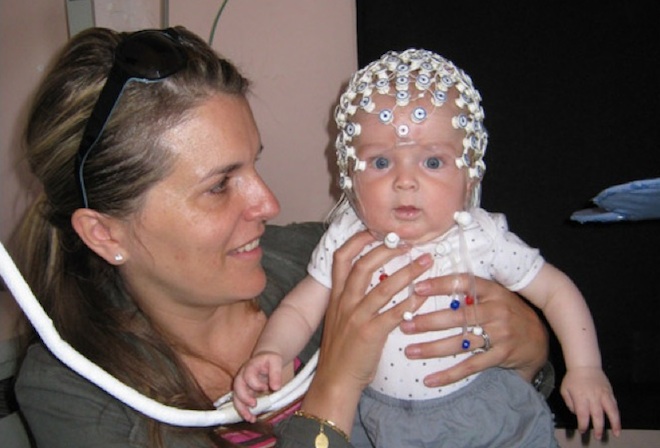If you have ever wondered what is running through the mind of an infant as you stare into their wide, adorable eyes? If so, then the findings of newly released research which studied the development of consciousness in infants is right up your alley.
By Truth | The Healers Journal
—
Babies, like puppies or kittens are simultaneously cute and mysterious. I doubt there is anyone among us who has not looked into their eyes and wondered what exactly they are thinking — how aware are they of what is going on? Are they simply passively absorbing information or actively analyzing the world around them in their own unique way? Well, researchers have been wondering this too for some time and the results of recent brain imaging studies done on infants are revealing some surprising findings.
For decades, neuroscientists have been searching for signs of consciousness in infants and comatose and heavily anesthetized adults. They have been measuring electrical brain activity in the two groups in the hopes that they would be able to figure out a pattern or marker that would definitively denote the presence of awareness in the latter group and when exactly consciousness begins to appear in babies.
This is how they do it:
1) The area of the brain associated with visual processing activates when an adult’s senses detect something moving like a car, a flower in the wind or an image moving across a screen, even if the object is moving too fast to notice. Any observed image that is present in the visual for long enough travels from the back of the brain to the prefrontal cortex, which holds the image in the mind for long enough to notice.
2) When the brain first notices something, there is a spike in activity, which is followed by another impulse — known as the ‘late slow wave’ — when the prefrontal cortex receives the message. This entire sequence takes less than one-third of a second.
3) The question is, does this occur in infants? A team of researchers in France have studied if this effect occurs in babies. In the study, the brain activity of over 240 infants was monitored through caps fitted with electrodes. The test consisted of showing the babies a picture of a face on a screen for a fraction of a second.
The Results
Sid Kouider, cognitive neuroscientists at CNRS, the French research agency, observed the infants for changes in brain electrical activity — known as event-related potentials (ERPs). In babies as young as five months old, Kouider observed ERP patterns very similar to adults. Kouider theorizes that the late slow wave pattern is likely present in infants as young as two months old.
The late slow wave is an important aspect of consciousness to study, because it indicates that the image is like stored, at least temporarily, in the baby’s ‘working memory’, which is directly associated with the formation of consciousness, according to Koudier.
“I expect we’ll find several different neural activity patterns to be correlated with consciousness,” says Lawrence Ward, cognitive neuroscientist at the University of British Colombia, who was not involved in the study. Ward believes the research is significant, but not definitive or even conclusive.
Regardless of the opinions of others, Kouider intends to further explore how his findings relate to the learning patters of infants, particularly the development of language. “We make the assumption that babies are learning very quickly and that they’re fully unconscious of what they learn,” he says. “Maybe that’s not true.”
See the study referred to in the article here: A neural marker of perceptual consciousness in infants.













